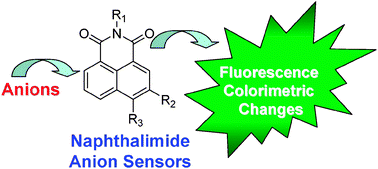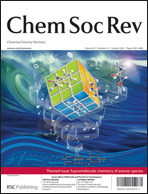This critical review focuses on the development of anion sensors, being either fluorescent and/or colorimetric, based on the use of the 1,8-naphthalimide structure; a highly versatile building unit that absorbs and emits at long wavelengths. The review commences with a short description of the most commonly used design principles employed in chemosensors, followed by a discussion on the photophysical properties of the 4-amino-1,8-naphthalimide structure which has been most commonly employed in both cation and anion sensing to date. This is followed by a review of the current state of the art in naphthalimide-based anion sensing, where systems using ureas, thioureas and amides as hydrogen-bonding receptors, as well as charged receptors have been used for anion sensing in both organic and aqueous solutions, or within various polymeric networks, such as hydrogels. The review concludes with some current and future perspectives including the use of the naphthalimides for sensing small biomolecules, such as amino acids, as well as probes for incorporation and binding to proteins; and for the recognition/sensing of polyanions such as DNA, and their potential use as novel therapeutic and diagnostic agents (95 references).

You have access to this article
 Please wait while we load your content...
Something went wrong. Try again?
Please wait while we load your content...
Something went wrong. Try again?


 Please wait while we load your content...
Please wait while we load your content...